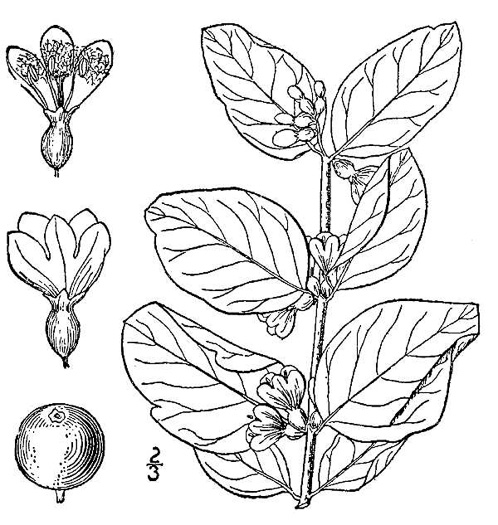Spermatophytes (seed plants): Angiosperms (flowering plants): Eudicots: Core Eudicots: Asterids: Campanulids: Dipsacales
WEAKLEY'S FLORA OF THE SOUTHEASTERN US (4/14/23):
Symphoricarpos albus var. albus
FAMILY
Caprifoliaceae
Go to FSUS key
Dig deeper at SERNEC, a consortium of southeastern herbaria.
The nominate variety albus is native in the Northeast, south in the VA mountains to only a few dozen miles north of the NC border. However, as it occurs on calcareous soils in VA, there is little suitable habitat in nearby NC. Read more at Vascular Plants of North Carolina.
SYNONYMOUS WITH
PLANTS NATIONAL DATABASE:
Symphoricarpos albus var. albus
FAMILY
Caprifoliaceae
SYNONYMOUS WITH Floristic Synthesis of North America. BONAP (Kartesz, 2021)
Symphoricarpos albus var. albus
SYNONYMOUS WITH Floristic Synthesis of North America (Kartesz, 1999)
Symphoricarpos albus var. albus
INCLUDED WITHIN Manual of the Southeastern Flora (Small, 1933, 1938)
Symphoricarpos albus
COMMON NAME:
Common Snowberry
To see larger pictures, click or hover over the thumbnails.
WEAKLEY'S FLORA OF THE SOUTHEASTERN US (4/14/23):
Symphoricarpos albus var. albus
FAMILY
Caprifoliaceae
SYNONYMOUS WITH
PLANTS NATIONAL DATABASE:
Symphoricarpos albus var. albus
FAMILY
Caprifoliaceae
SYNONYMOUS WITH
Floristic Synthesis of North America. BONAP (Kartesz, 2021)
Symphoricarpos albus var. albus
SYNONYMOUS WITH
Floristic Synthesis of North America (Kartesz, 1999)
Symphoricarpos albus var. albus
INCLUDED WITHIN
Manual of the Southeastern Flora (Small, 1933, 1938)
Symphoricarpos albus
If a search such as "Carex leptalea var. leptalea" doesn't deliver the results you want, try "Carex leptalea".
Or, to minimize chances of a misspelling, try just "Carex le".
Less is more: If "pencil flower" doesn't deliver the results you want, try "pencil".


